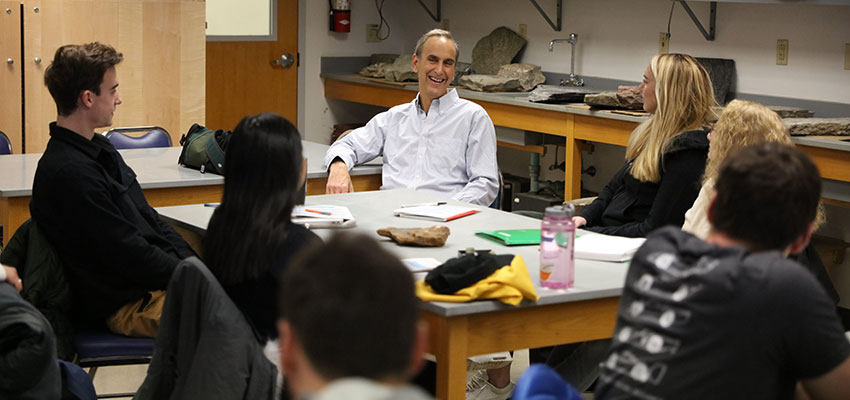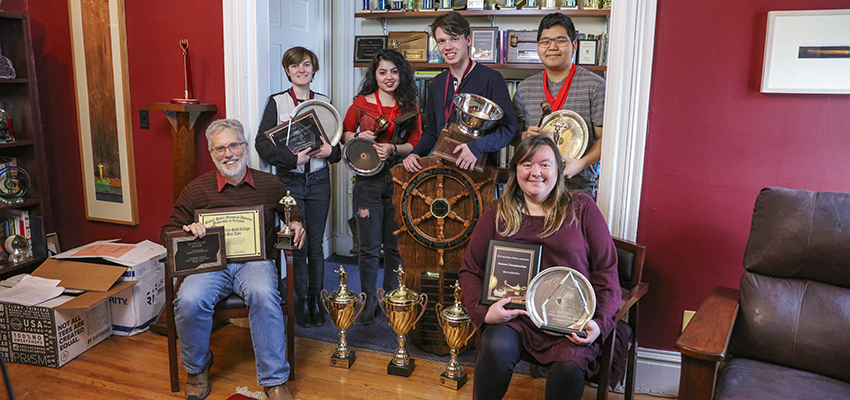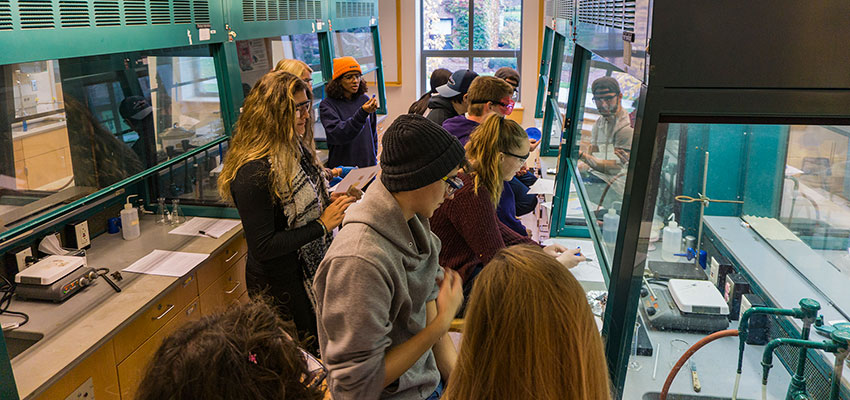
HWS News
29 January 2020 Digging into the Martian Past with Grotzinger 79
Billions of dollars, millions of miles, uncertain outcomes.
Why are we doing this? Its about this question of life on Mars, John Grotzinger 79, Sc.D. 13 told the audience gathered for his lecture at HWS on Tuesday night.

The former mission leader for NASA's Mars Science Laboratory, Grotzinger returned to campus to share the results of the Curiosity Rover's work on the Red Planet and to preview the next Mars mission, Mars 2020, scheduled to launch this summer. Watch a video of the lecture here.
Currently, the Fletcher Jones Professor of Geology and the Ted and Ginger Jenkins Leadership Chair in the Division of Geological and Planetary Sciences at the California Institute of Technology, Grotzinger is an eminent geologist with wide-ranging interests in sedimentary processes, geobiology and Earth's early history. He guided the team that landed Curiosity, discovering evidence of an ancient Martian lake and making history when he confirmed the presence of an environment that could have supported microbial life.
These successes, Grotzinger explained, were the result of years of observations, research, planning, testing and revision in other words, the scientific process in practice.
"You have to have an idea that becomes a hypotheses and then develop a plan and execute it to test that hypothesis," he said. "We have a hypothesis that the earliest history of Mars could have been a place where microorganisms could have survived. Thats the basis for the exploration. We will continue that process by launching the next rover this summer, and that one will eventually return rocks samples to Earth."
In his talk, Grotzinger discussed the technologies developed for the various missions to Mars, including the newest version of the rover the most complicated vehicle that mankind has ever built and sent to space, he said, "an example of systems engineering at its greatest because its not something anyone has built before as well as the challenges of landing on and maneuvering around the Red Planet from a couple hundred million miles away."
He also summarized the history of the exploration of Mars, from the early 20th century, when Percival Lowell saw ice caps on Mars with his telescope, to the mid-century Mariner and Viking missions, to the Opportunity Rover's landing in 2004, which was Grotzinger's first project with NASA.
"That changed my career," he said, noting Opportunity's breakthrough discovery of chemically bound water present in minerals on Mars.
"With those findings, NASA approved the Curiosity mission, launched in 2011, to explore further what constituted the ancient environment and whether it could have supported life," Grotzinger explained. Curiosity's findings indeed lent credence to that hypothesis; in 2014, Grotzinger and his colleagues published a paper reporting the discovery of methane and carbon-based organic molecules, which could be explained as the waste product of certain living microbes.
"In examining their geological and chemical composition, the layers of rock on Mars can be read like reading a history book," Grotzinger said, "to find out about the oldest history of Mars when we think there was water there. That's what were most curious about."
"That project will continue with Mars 2020, with the goal of sampling the diversity of Mars," Grotzinger said, "to search for indications of past habitable conditions as well as signs of past microbial life itself."
His visit to campus, which was sponsored by the HWS Geoscience Department, also included conversations with geoscience classes and individual meetings and lunch with students.
Grotzinger has been elected into the National Academy of Sciences, one of the highest honors that can be accorded a U.S. scientist, and is the recipient of a multitude of other awards, including the National Science Foundation Young Investigator Award, the Fred Donath Medal from the Geological Society of America, the Henno Martin Medal from the Geological Society of Namibia and the Charles Doolittle Walcott Medal by the National Academy of Sciences. He was the recipient of the 2011 Laurence L. Sloss Award from the Geological Society of America for his original and lasting contributions to three areas of sedimentary geology.
At Hobart, Grotzinger received a bachelors degree in geosciences. He went on to earn an M.S. from the University of Montana and a Ph.D. from Virginia Polytechnic Institute and State University. He completed his post-doctoral work at Columbia University. On May 19, 2013, Hobart and William Smith Colleges presented him with an honorary Doctor of Science during Commencement. He also gave the 2018 Commencement Address.
Watch a video of Grotzinger's Life of Consequence created in 2018.



